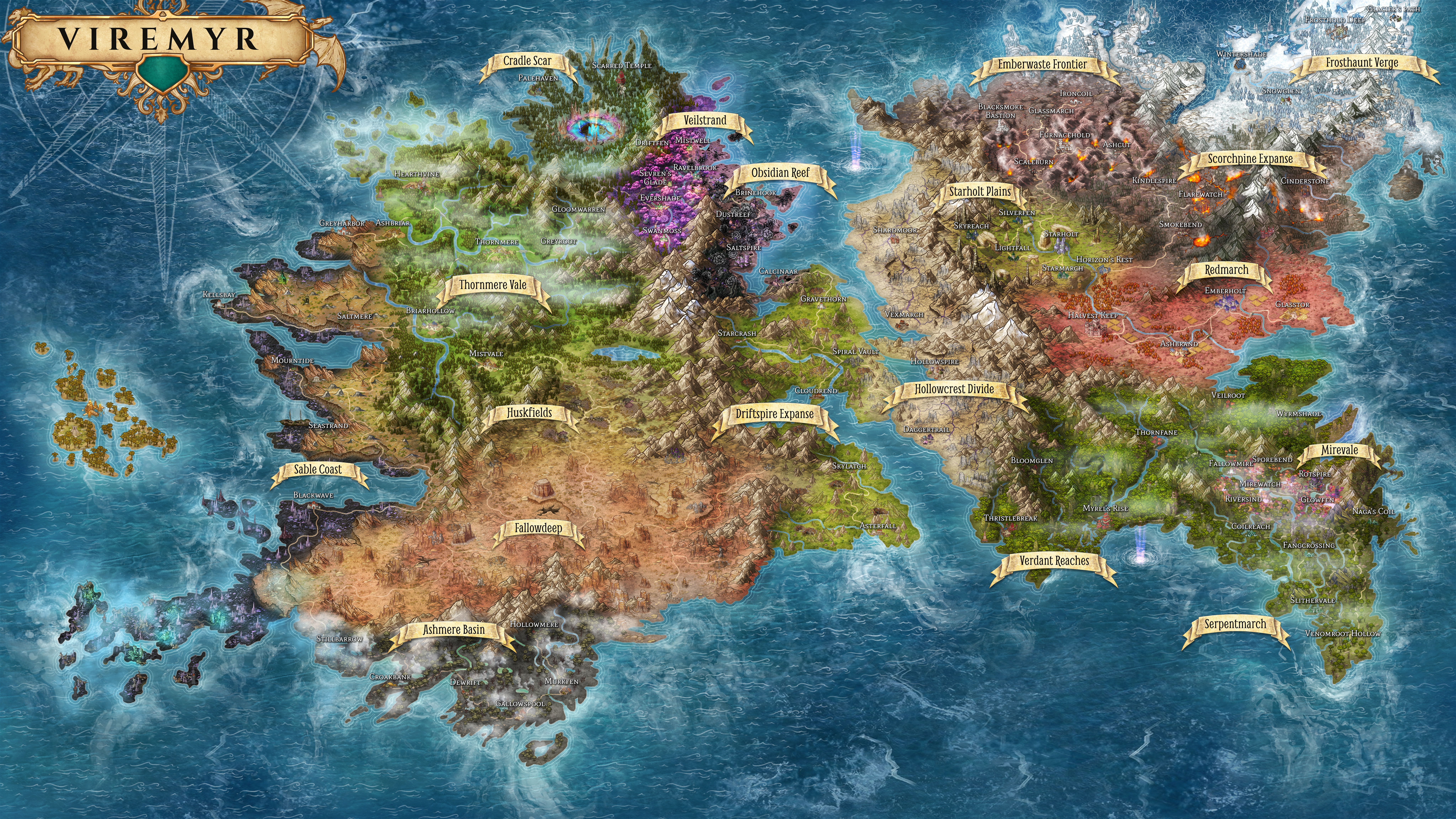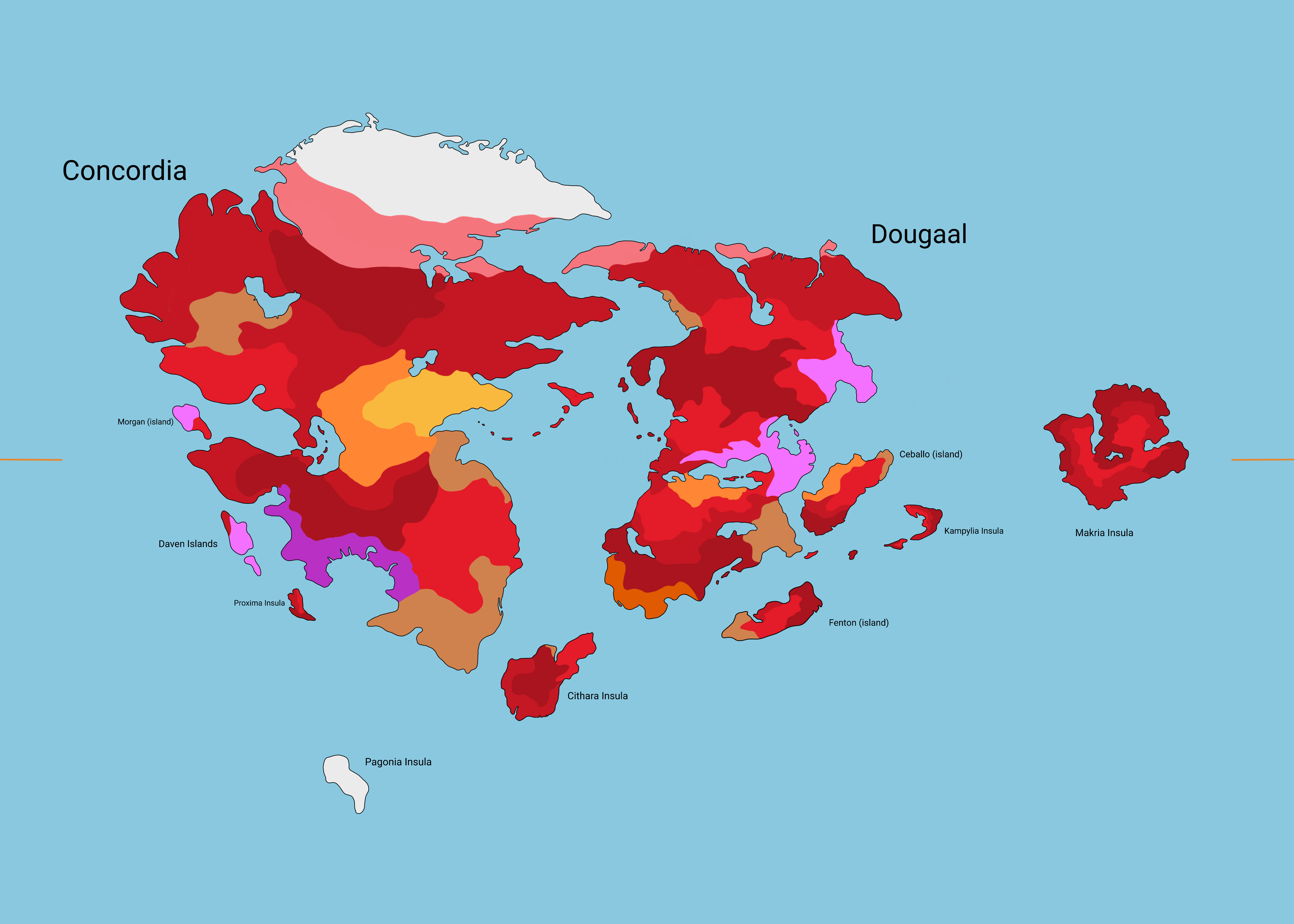HOME | DD
 Malicious-Monkey — Ilion: A View from Space
Malicious-Monkey — Ilion: A View from Space

Published: 2013-01-28 04:02:12 +0000 UTC; Views: 5559; Favourites: 94; Downloads: 58
Redirect to original
Description
The planet Ilion is the focus of a speculative biology project of mine and some experiments in fiction writing, which you can read over here ([link] ). The planet is tidally locked to a red dwarf star.First off, thanks to all on Speculative Evolution [link] who gave input and feedback on things like atmosphere color and weather systems. It's not too late to make changes, so if anything stands out as off, feel free to speak up.
See a progress shot and discussion here: [link]
And a map of the biomes: [link]
Painted with a mouse in Photoshop Elements 5.0.
Related content
Comments: 33

I'm really fascinated by the work you've done on Ilion.
I've made a tidally locked world too.
I'd welcome your opinion on it
www.deviantart.com/seekhim/art…
GOD bless
John 3:16
👍: 0 ⏩: 0

Have not had a chance to dig into all of the linked information yet, however, this is a really great concept art. Looking forward to my homework.
👍: 0 ⏩: 0

I really, really like how you portrayed a tidally locked Earth analogue orbiting a red dwarf, because you actually thought its climate out. The only thing that threw me for a loop is part of the vegetation, I really don't see how a planet orbiting a red dwarf could end up with red plants, mainly because it would mean they wouldn't be exploiting the most abundant wavelength of light in an environment where visible light is much less plentiful than on Earth (the smaller red dwarfs would look 10 times less bright than the Sun or even fainter even from an habitable planet around them).
👍: 0 ⏩: 1

I always had the idea that red plants exploit primarily infrared, while black plants exploit both infrared and red. Red plants can't survive near the terminator where photons of longer wavelengths are filtered out. Black plants overheat too easily at zenith. So, each type has its niche.
There are differently-colored plants on Earth and they all survive just fine using less optimal light. Red (Earth) plants use green photons, which are less abundant than red ones but have more energy each. This strategy works well in the winter which is why we have fall colors. Green plants use red photons which are abundant but low quality. I've also seen plants that are purple, black, or silvery.
👍: 0 ⏩: 1

I stand corrected then, since the red plants are mainly thermosynthetic, then their color is pretty much irrelevant, they just need to be dark enough to catch what heat they need. A very good way to dodge the flare'n'sunspot problem, especially inside the meridian circle (30° in every direction from the subsolar point). Since the planet has neither a circadian cycle nor seasons, the red plants probably bloom during the flares and go into hibernation when a particularly large sunspot crosses the surface of their sun.
👍: 0 ⏩: 1

Sometimes I wonder though if thermosynthesis provides sufficient energy for the plant even with an abundance of infrared. Barnard's star doesn't flare very often compared to other red dwarfs (the first and last known flare was detected in 1998). Stellar variability causes short periods of climate change that are sort of like long seasons, but they are unpredictable. The plants and animals would need a way to anticipate these in advance so they can adapt as necessary.
I hadn't heard the term "meridian circle" before, and I've been wondering what to call that area for the longest time.
👍: 0 ⏩: 1

Thermosynthesis and photosynthesis are pretty much equivalent at building food for plants, the former is a slower process because infrared photons are less energetic than those used by Earth's plants, but given the fact that Ilion's plants stay under the sun 24 hours a day, the handicap is negligible.
That's my personal way of establishing a locked planet's dayside climate zones, here's the complete list:
0°N/0°W Meridian Pole (Equator)
30°N-30°S/30°W-30°E Meridian Circle (Tropics)
60°N-60°S/60°W-60°E Twilight Circle (Polar Circles)
90°N-90°S/90°W-90°E Terminator (Poles)
Feel free to use them as you wish.
👍: 0 ⏩: 1

Would you mind if I adopt some of that terminology?
👍: 0 ⏩: 1

Not at all. Three of them aren't even that original and 'terminator' is the actual scientific term for the day/night border on a planet.
👍: 0 ⏩: 1

Thanks, I knew about terminator but never heard any terms for the zones around terminator and zenith, and in between.
👍: 0 ⏩: 1

Think nothing of it. Did you know that Venus was probably still habitable around 2 billion years ago? It may have been heating up since its crust solidified, but for a time the greenhouse effect that ended up choking the life out of it had been stymied by the planet's ridiculously long solar day, more precisely by its two month long night.
👍: 0 ⏩: 1

That is very interesting, I did not know that.
👍: 0 ⏩: 1

It's not widely known, probably because a lot of people still think Venus decelerated gradually due to solar tides and atmospheric friction. More likely, the eight month long rotation period of the planet and its consequent four month long solar day, along with its backwards spin, are the longest lasting legacy of the collision that brought Venus up to its present mass. It happened at a very shallow angle like the Big Splat that created the Moon, but it involved two bodies each about 40% as massive as the Earth and spinning at about the same speed, one skidding on the backside of the other, completely re-melting each other, losing almost all of their rotational energy in the process and finally coalescing. The fact that Venus is spinning backwards in super-slow motion (you can actually matching it jogging at a slow pace) tells us the planet giving the other the mother of all cosmic wedgies was the one rotating fractionally faster than the other.
👍: 0 ⏩: 1

I just find it amazing that we know that much at all, considering we weren't around when it happened.
👍: 0 ⏩: 1

Me too, and in Venus' case they came to this conclusion just altering some data in a computer model of the Big Splat. Building on that, they extrapolated that in the inner Solar System there was enough material to build 20 mars-sized planets and even what happened to most of them:
- Mercury: never made it to mars-size because its developement was impaired by the Sun's gravitational influence;
- Venus: formed largely by a collision between two planets, each formed by 4 mars-sized predecessors;
- Earth and Moon: the latter is the material ejected by the ninth and last impact of a mars-sized planet on the former;
- Mars: made it to its actual size and remained relatively undisturbed, until a pluto-sized dwarf planet came in and smacked it in the nothern hemisphere;
- Other material: either it got into the Asteroid Belt or it got sprinkled over the four remaining planets for dessert.
👍: 0 ⏩: 0

It would be cool to see an expedition to the.... DARK SIDE.
Dun dun daaaaaaahhhhhh
👍: 0 ⏩: 1

But there's nothing there but ice and water. Maybe a submersible (unmanned) probe to the hydrothermal vents would do, but I'll get into that later.
👍: 0 ⏩: 1

That would be neat. But sadly lacking in the lively notes made by the scientists. That really adds TONS of personality to your project, it's probably why yours is one of my favorites. You're really good with your dialogue, it brings so much life to your project.
👍: 0 ⏩: 1

I think I could get some cool pictures out of it, though. I can still put scientist notes in but they'd be sitting at a safe distance controlling the camera and downloading the images.
👍: 0 ⏩: 1

I'm sure you'd find some way to make it interesting.
👍: 0 ⏩: 0

You have a detailed, more or less realistic, speculative headworld too? Yes!
👍: 0 ⏩: 1

Heck yes, and a story to go with it. Not too different from yours, in fact. I think our scientists would get along well. [link]
👍: 0 ⏩: 0

i appreciate all the thought that has gone into this
👍: 0 ⏩: 0

Wow this is incredible! I am out of words right now, the detail is really mesmerizing.
👍: 0 ⏩: 1

Took the words right out of my mouth.
👍: 0 ⏩: 1

Your welcome. And marry christmas
👍: 0 ⏩: 1

Thank you! I hope you had fun as well!
👍: 0 ⏩: 1

I know I might sound like a broken recod, but where was that massive supervolcano going to be?
👍: 0 ⏩: 1

It's on the south arm of Aeneas (the base of "elephant's trunk" as it's called) but I left it out for now. Once I decide how big it can be and what sort of geological activity caused it, I'll add it in.
👍: 0 ⏩: 0




























